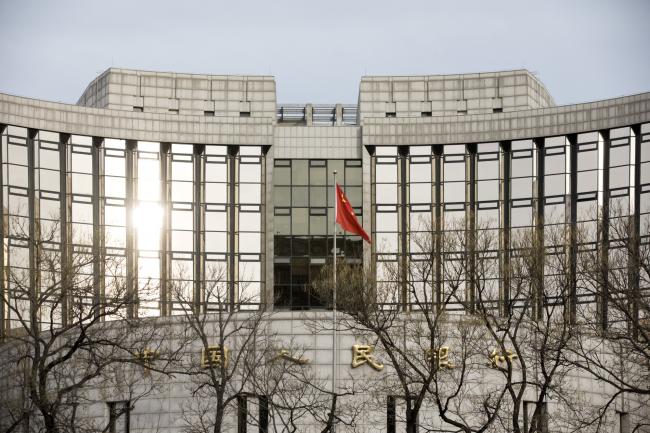(Bloomberg) -- China’s central bank cut back some of the long-term funding it supplies banks in a sign it may be dialing back its monetary stimulus as the economy strengthens.
The People’s Bank of China rolled over about half of the funds coming due via 1-year medium-term lending, and also offered to lend 160 billion yuan ($24 billion) for 7 days via reverse repurchase agreements. Combining the two offerings on Wednesday mean there was a net withdrawal of 6.5 billion yuan from money markets after 366.5 billion yuan of MLF loans matured.
The operations reduced the possibility of imminent cuts to the amount of cash banks have to hold in reserve, analysts said. MLF funding is more expensive than a reserve-requirement ratios cut, potentially pushing up the average funding costs in the market.
The overnight repurchase rate, a key gauge of borrowing costs in China’s money market, hit 3 percent for the first time in four years, while the 7-day repo rate fell.
"This indicates the central bank is not worried about economic growth, but is paying attention to financial stability and seeking to avert asset bubbles," said Gao Qi, a currency strategist at Scotiabank in Singapore. "Bond yields should rise further."
Policy Balance
With the stock market booming and warnings about a potential resurgence in the housing market, officials are faced with the tricky task of providing stimulus without fueling speculation. Data released on Wednesday showed the economy held up in the first quarter, with gross domestic product rising 6.4 percent from a year earlier and factory output increasing faster than expected.
Monetary policy is "swinging back" from a relatively loose position while maintaining the prudent stance, and filling in a liquidity shortage is its main policy goal for now, Ming Ming, head of fixed income research at Citic Securities Co Ltd. in Beijing, wrote in a note.
He said the PBOC is trying to cool down the credit market by withdrawing some of the mid-term funding, which can boost credit growth. Lending surged in March.
Still, the central bank can add funding to markets whenever it looks necessary should there be a big liquidity gap or rising downside risks. It hasn’t conducted targeted MLF lending in the second quarter yet, a tool it can use once a quarter to help finance small and private companies.
"Fundamental and technical conditions both indicate that it is too early to roll back supportive monetary policies. We still expect the PBOC to reduce the RRR by another 50-100 basis points by the end of the year," David Qu, economist at Bloomberg Economics in Hong Kong, wrote in a note.
Banks’ liquidity buffer, as represented by the excess reserve ratio, may have stayed flat at around 1.7 percent at the end of March, and history suggests the PBOC tends to cut reserves when the ratio falls significantly below 1.5 percent, according to Qu.
To contact Bloomberg News staff for this story: Yinan Zhao in Beijing at yzhao300@bloomberg.net;Livia Yap in Singapore at lyap14@bloomberg.net
To contact the editors responsible for this story: Jeffrey Black at jblack25@bloomberg.net, James Mayger, Malcolm Scott
©2019 Bloomberg L.P.
